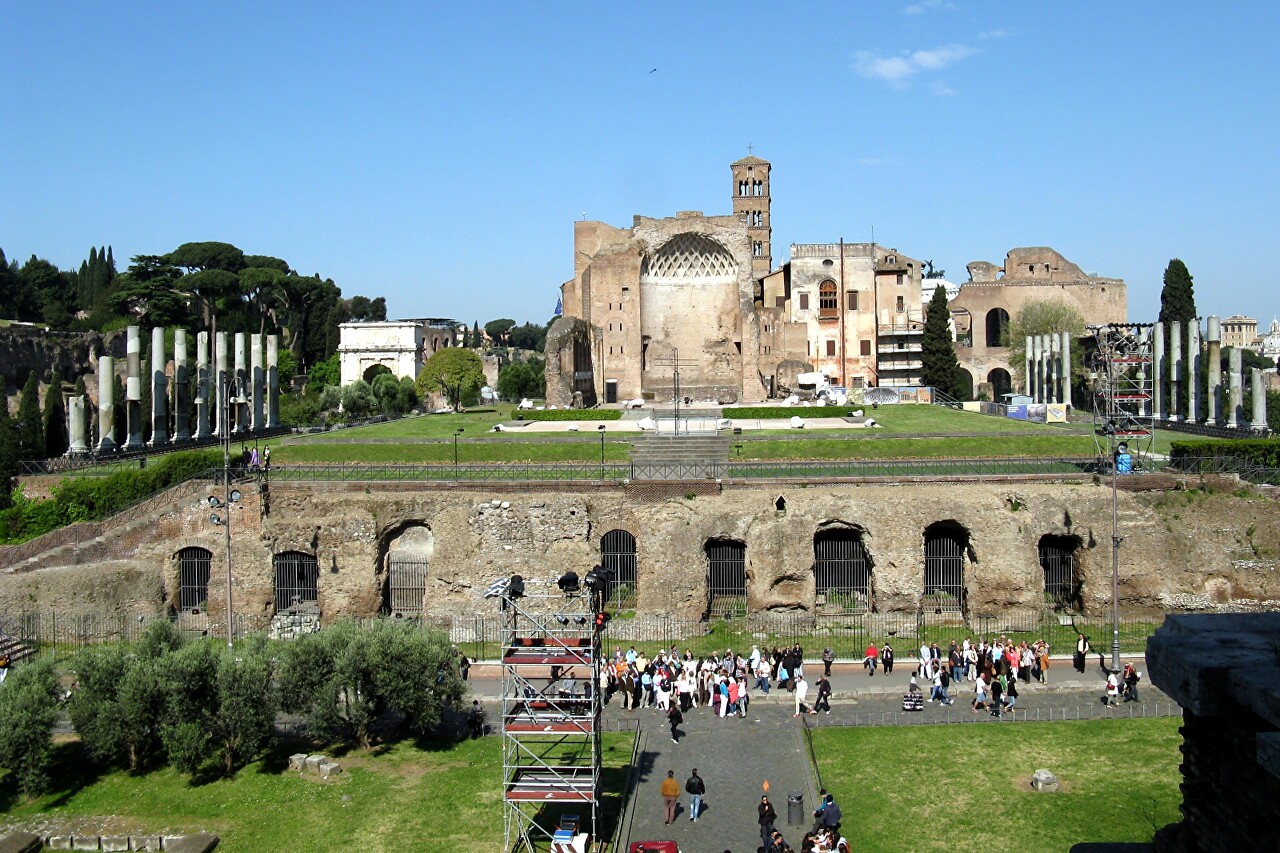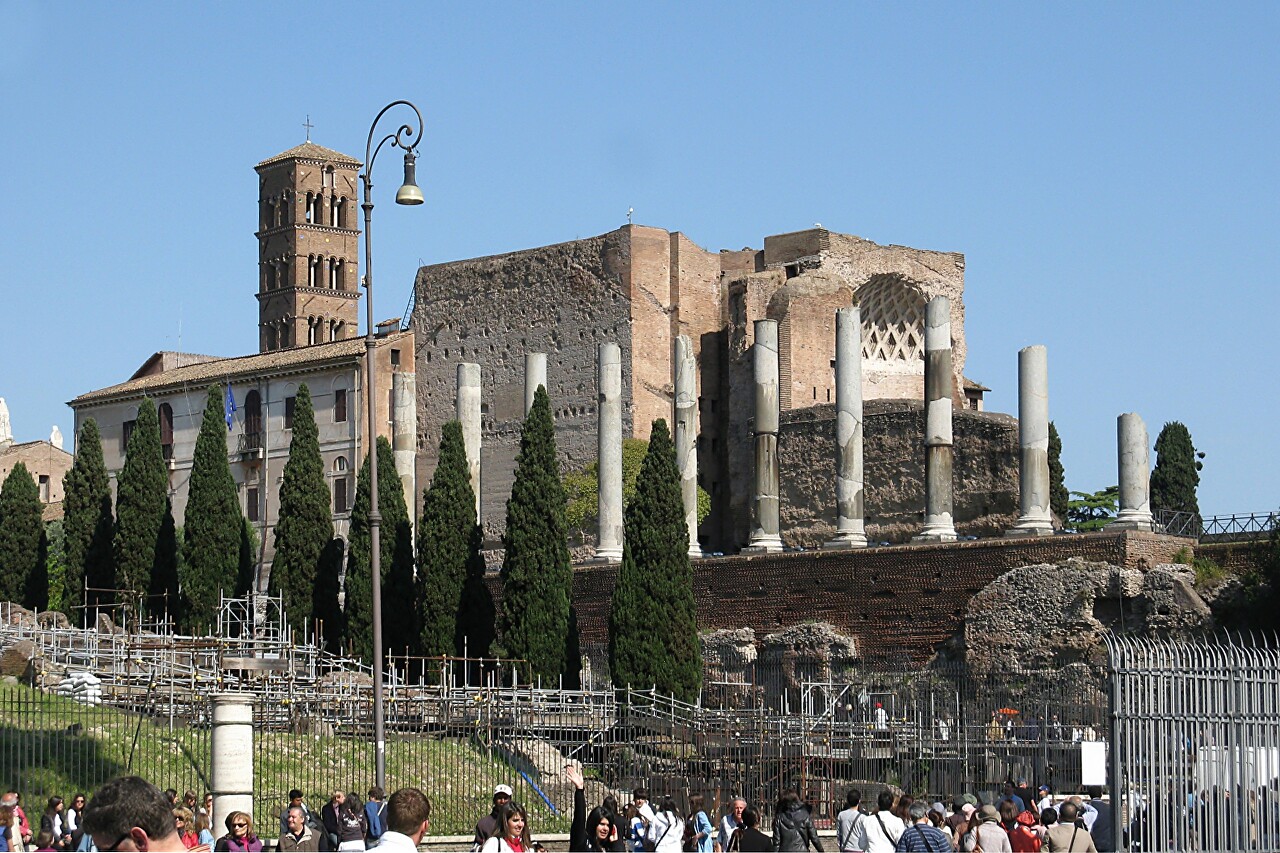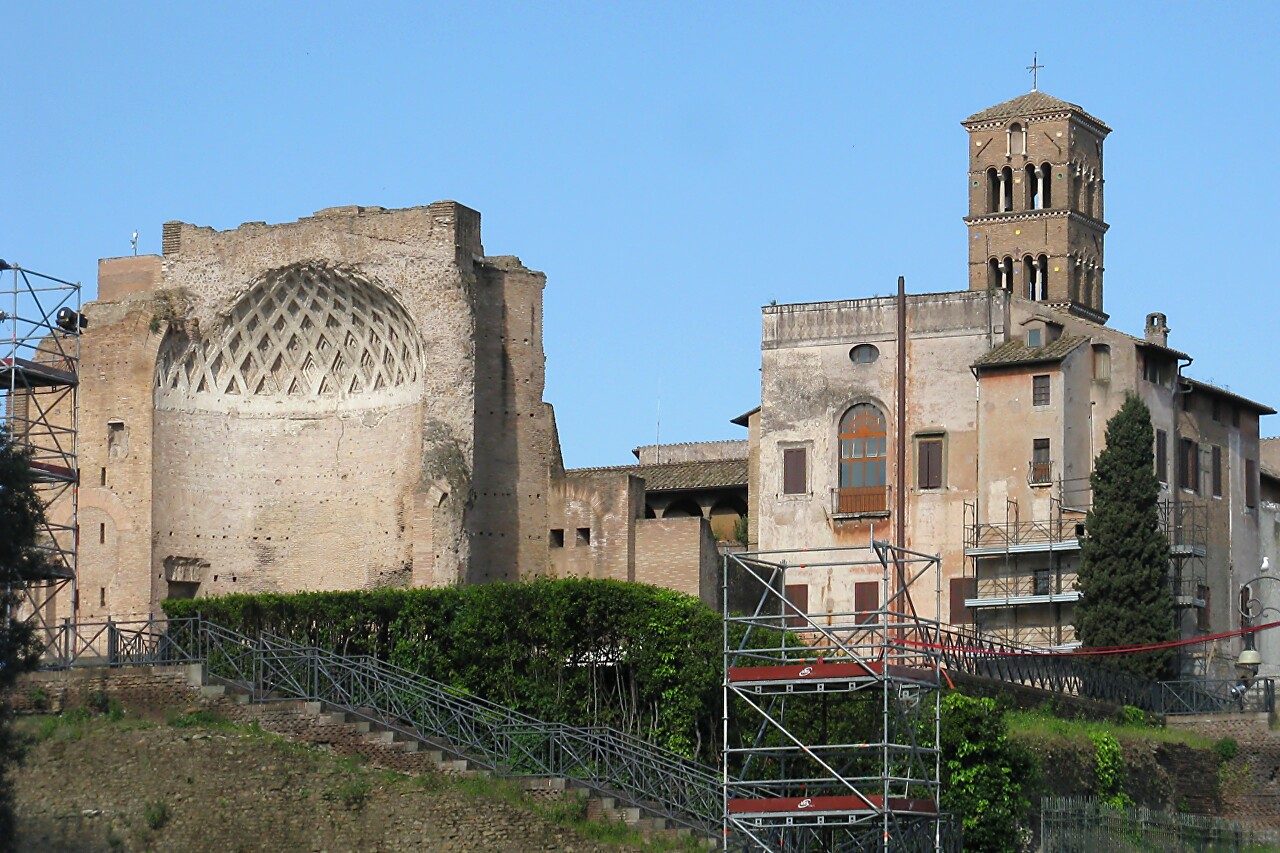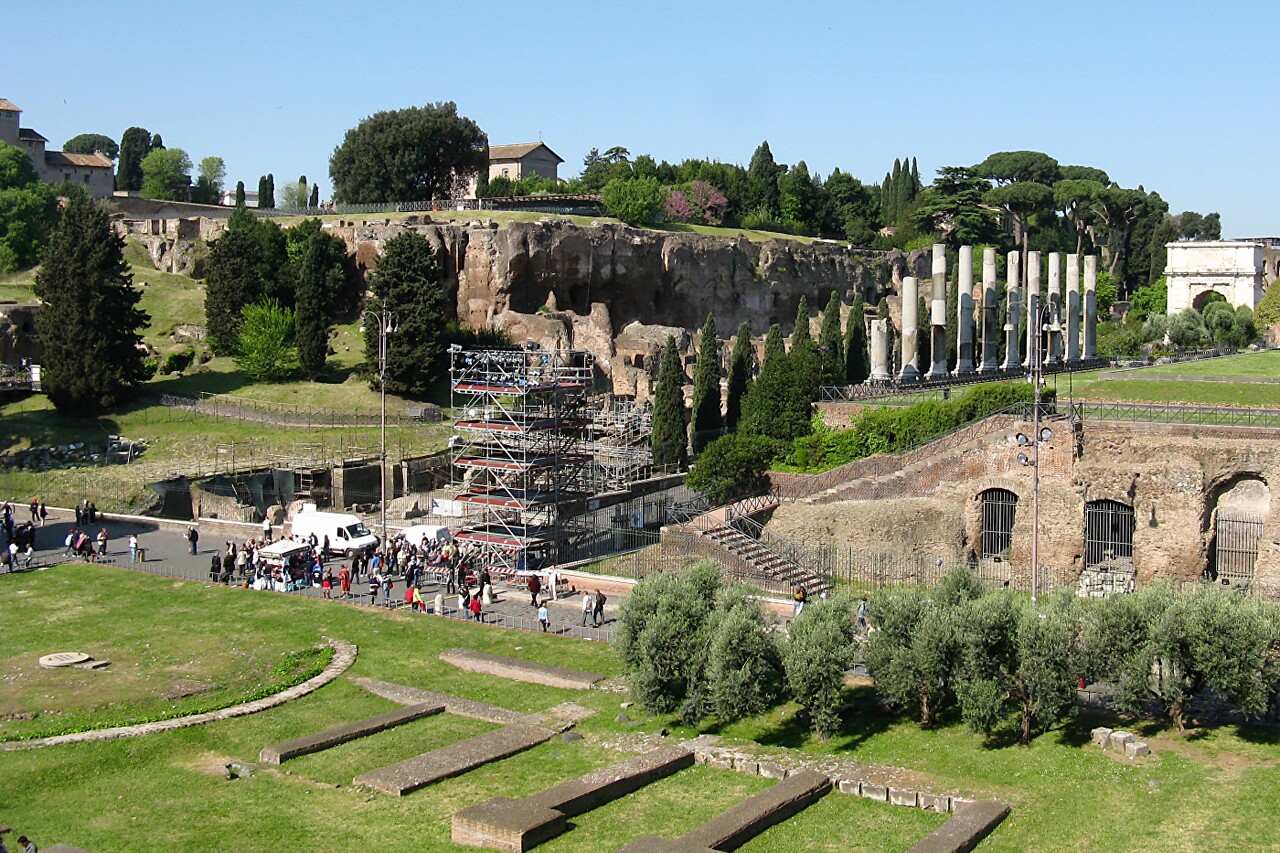Temple of Venus and Roma
The Western walls of the Colosseum overlook the Velian hill, where the ruins of the largest religious building in Ancient Rome, built by the Emperor Hadrian on the site of the Golden house of Nero, are located. Construction of the temple (lat. Templum Veneris et Romae) began in 121 on the remains of the Palace portico, and the giant statue of Nero was moved to the Flavian Amphitheater, now known as the Colosseum. According to one version, the name Colosseo amphitheater received from this statue - the colossus. The temple was built on a pedestal of impressive dimensions-145 by 100 meters and a height of 29.5 meters, on the long sides of which were placed columns, many of which can still be seen today.

The building was 110 meters long and 53 meters wide. The temple consisted of two symmetrical parts-a cell, 31 meters high. One of the cellos was dedicated to Venus (Venus Felix-the goddess who brings happiness), the second to Roma (Roma Aeterna-Roma eternal), the patroness of Rome. The cella were separated by statues of goddesses who sat on thrones back to back. Roma's eyes were on the Roman forum, and Venus was looking at the Colosseum. The cella was surrounded by two rows of powerful Corinthian columns, which had a diameter of 1.8 meters and gave the temple a monumental appearance. Now only the foundations remain. In 135, the unfinished Church was opened, although work continued until 141. In 307, the temple was damaged by fire, and was restored in the era of the Emperor Maxentius.

In the second decade of the century, like most other magnificent buildings in ancient Rome, the temple was used as a source of materials and decoration for newly constructed buildings. In 630, gilded bronze slabs from the roof of the Church were used to decorate St. Peter's Cathedral. According to historians, the structure was destroyed by an earthquake in the early 9th century, after which its ruins began to be pulled apart for building materials. Around 850, Emperor Leo IV ordered a new Church to be built on the ruins, called Santa Maria Nova. In 1612 the Church was rebuilt and given the name of Santa Francesca Romana.

During the time of John Paul II, part of the plinth facing the Colosseum was used as a tribune during Good Friday. After the restoration, which lasted a quarter of a century, the temple became available to the public-the ruins are included in the Museum territory of the Roman forums and Palatine hill, as well as the Colosseum, where a single ticket is valid.
